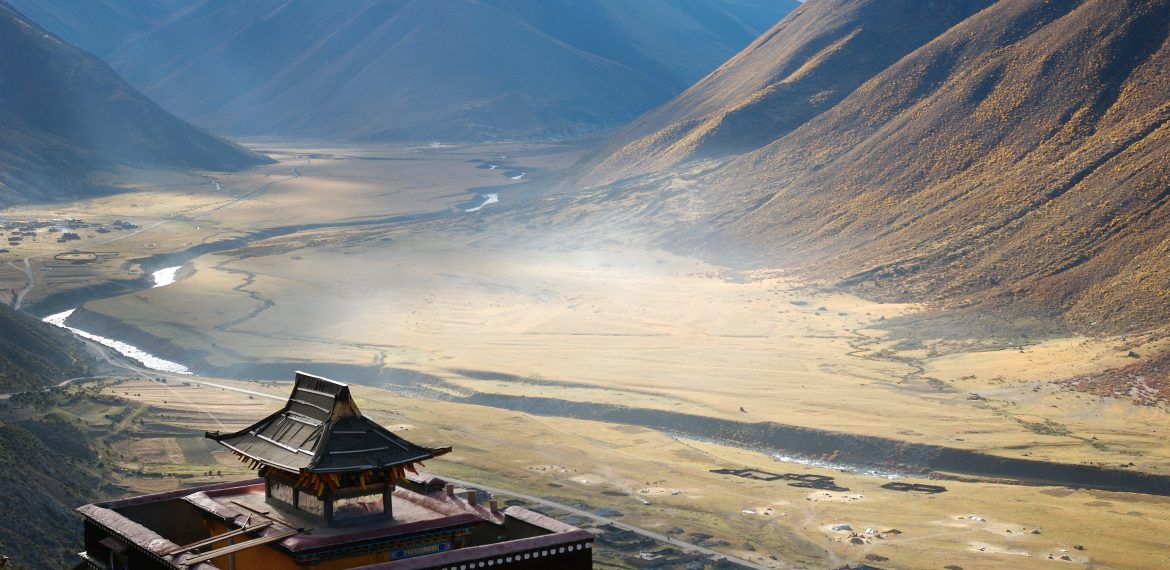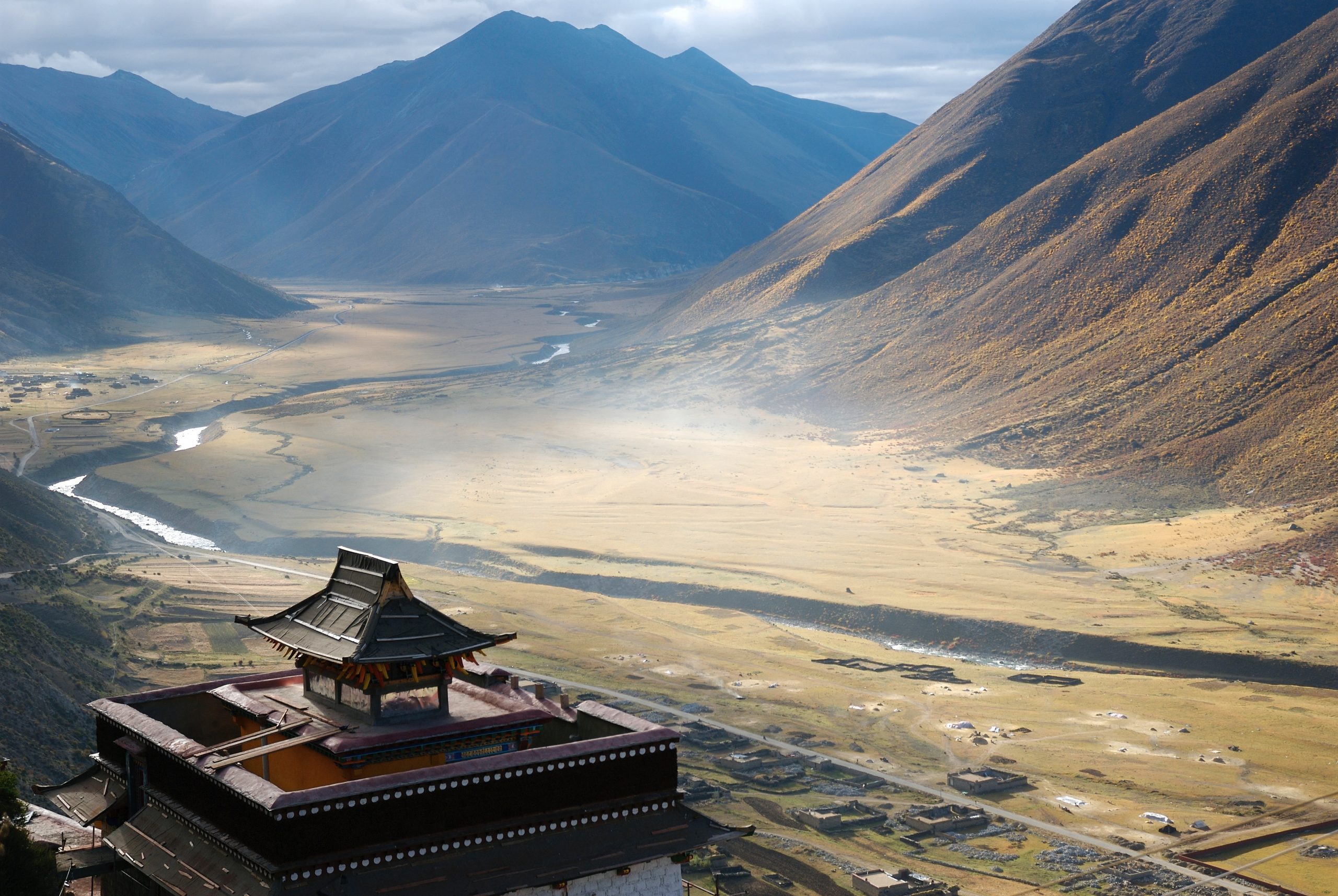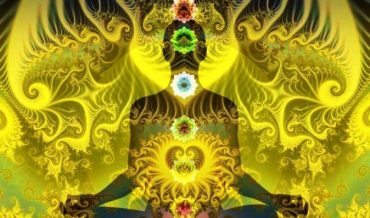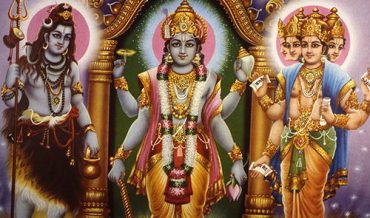Tibet was historically part of Yudhishthir Maharaj’s empire before 3102 BC. It was always considered the territory of Kuber, the treasurer of Devatas. Many important vedic cultural sites such as Mansarovar Lake, Kailash Parvat and many other religious sites of Vedic culture are located there. For Hindus the whole Tibet is a sacred land to cultivate higher spiritual consciousness. Before the Rajasuya Yajna, Arjun was sent to collect wealth from Kuber’s region. There, he collected huge amounts of wealth for Yudhishthir Maharaja’s Rajasuya Yajna. Most places of Arjun’s travel to the north for obtaining wealth for his elder brother Yudhishthir are located in Tibet. From there Arjun travelled further north via Central Asia until Russian Siberia and then went west to Shak dvip which is today’s Europe. During Mahabharata times, Bhim the elder brother of Arjun established his might in South eastern China. The history of Tibet region is widely mentioned in Mahabharat. Some of the most sacred Hindu temples are located in Tibet. The Chinese government has been gracious to Hindus to allow them to visit their sacred shrines and worshipable places in Tibet. King Rishabhdev, an incarnation of Vishnu has his ashram in Mount Kailash. Needless to state that the ancient Vedic history has strong connections to South Western and South Eastern Tibet.
In terms of actual Area, Tibet would make up 50% of the current land of China. The Chinese government has absorbed many parts of Tibet into other provinces such as Sichuan, Qinghai and Xikang. In 1912, Tibet declared its independence from all Chinese and Mongol provinces. Until 1951, Tibet was independent of China. The Tibetan Buddhism is the main religion of Tibet deeply inspired by the spiritual Hindu culture. It shares many similar spiritual practices with Hinduism. The modern history of Tibet begins with Songtsen Gampo who married Nepali princess Bhrikuti Devi who was a devotee of Shiva and also Buddha. She brought a deep mixture of Hinduism and Buddhism to Tibet. Under her influence, Lhasa became the central rallying point for the whole of Tibet. Together they built Jokhang, which is the most sacred temple in the whole of Tibet. During Buddha’s time, many travellers from Tibet took Buddhism to their lands. This dharma got established in Tibet.
In Tibetan Buddhism, Mañjuśrī, Avalokiteśvara and Vajrapāṇi are considered the highest bodhisattvas. When the Chinese monk Faxian traveled to Mathura in India around 400 CE, he wrote about monks presenting offerings to Avalokiteśvara. When Xuanzang traveled to India in the 7th century, he provided eyewitness accounts of Avalokiteśvara statues being venerated by devotees from all walks of life. For Hindus, Avalokitesvara is none other than Krishna. Krishna is extremely famous and virtually worshipped by all who follow Vedic literatures. Vajrapāni is the Indra in Hinduism. Manjusri is the Brahma in Hinduism. Tibetan spiritual philosophy is intrinsically tied to Hinduism. Chinese Buddhism and Tibetan Buddhism have a lot of commonality. Manjusri is worshipped along with Kṣitigarbha, Avalokiteśvara, and Samantabhadra. A mantra commonly associated with Mañjuśrī is the following: oṃ arapacana dhīḥ.
Keeping aside politics, Hinduism is the parent of all forms of Buddhism. They are almost like cousin faiths with common Grand Parents coming from Vedic literatures. The Tibetan language has its own script which it shares with Ladakhi and Dzongkha, and which is derived from the ancient Indian Brāhmī script. That Dalai Lama has become the spiritual representative of all Tibetans, has been established through Altan Qan often misspelled as Khan. The title “Dalai Lama ” was first bestowed by the Mongolian ruler Altan Qan on Sonam Gyatso in 1578, a title derived from the Mongolian Dalai-yin qan one. Since then the Dalai Lama is the de facto Ruler of Tibetan culture and spirituality.
In 1841 Maharaja Ranjit Singh travelled to Tibet to establish dharma, and while returning established his fort in Ladakh. The Treaty of Chushul established Sikh rule in Ladakh. Many Hindu temples came up along with Gurudwaras. The East India company’s trade of Opium through the Qing dynasty survived due to this treaty. In 1910, the Qing dynasty under Zhao Erfeng defeated the armies of the Dalai Lama and expelled him to British India. In 1914, Tibetan government signed a treaty with British India and gave them control of Southern Tibet. In 1951, Chinese communist government reinstated the 14th Dalai Lama with full control of the military which the then Dalai Lama refused leading to their exile in Dharamshala, India.
Tibet has been called the “Water Tower” of Asia, and China is investing heavily in water projects in Tibet. The Indus and Brahmaputra rivers originate from a lake (Tib: Tso Mapham) in Western Tibet, near Mount Kailash. The mountain is a holy pilgrimage site for both Hindus and Tibetans. The Hindus consider the mountain to be the abode of Lord Shiva. The Tibetan name for Mt. Kailash is Khang Rinpoche. Chinese claims to the whole Tibet are culturally and politically not justified due to Tibet’s close cultural ties with Hinduism. Given the History of that land, it is important to give due respect to the culture, traditions and language of Tibetans. It’s time for India and the world to politically and militarily assert themselves to protect the human rights of millions who have lost their right to practice their belief and culture, because of political ideological conquest. For India it is a golden chance to correct the history of the past and establish dharma for all in Tibet.Tibet is a sacred land for Hindus and Tibetans.
Credits: Wikipedia; Pexels
Disclaimer: The writer’s views are personal and are meant to spiritually educate the masses.
All information entered is personal to the author. Any modification or changes must be addressed to the author.









